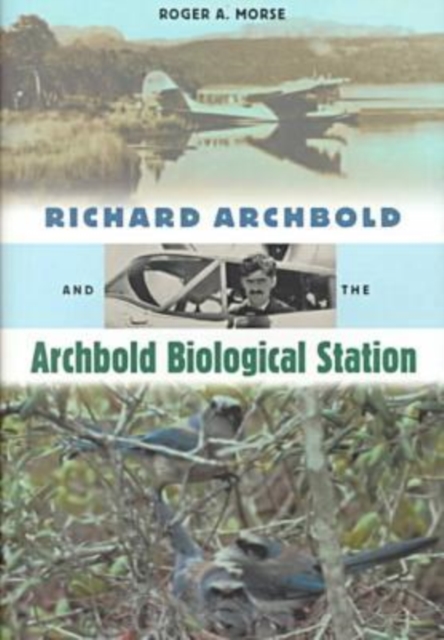
Richard Archbold and the Archbold Biological Station Hardback
Hardback
Description
"The story of a remarkable man who yearned to be an explorer . . . and for a change had the wherewithal to realize his ambitions."--Dean Amadon, curator (ret.), American Museum of Natural History"There was an ocean that no one had ever flown before--he flew it.
There was a vast jungle that no white man had ever entered--he explored it.
Yet few people have ever heard of Richard Archbold."--Lowell Thomas, 1940The legend of Richard Archbold (1907-1976), one of Florida's most prominent biologists, began in the remote jungles of Madagascar and New Guinea, journeys recorded in the pages of National Geographic and the Saturday Evening Post in the 1920s and 1930s. Under the auspices of the American Museum of Natural History, Archbold financed and led scientific expeditions to unexplored regions of the world, mapping them and using aircraft for the first time to supply field staff. Because of the impending Second World War, he agreed to find for the Australians a westward air route to Great Britain across the Indian Ocean and Africa.
He left San Diego for New Guinea in the summer of 1938 and arrived in New York during the 1939 World's Fair, becoming the first man to circumnavigate the earth at its widest point and receiving a hero's welcome. When war halted his overseas explorations, Archbold founded in 1941 what has become one of the premier centers in the world for biological research.
The 5,000-acre estate, Archbold Biological Station near Lake Placid, Florida, covers one of the most scientifically unique and threatened ecosystems in the world, the Florida Scrub.
Archbold's initial enthusiasm for the scrub and his dedication to research there has been fully vindicated: the station now supports 19 federally listed threatened and endangered species, including 13 endemic plants.
Recognized as one of the most superbly appointed field sites in North America, it houses impressive bird, insect, plant, and vertebrate collections. During his lifetime, Archbold hosted many of the world's leading biologists and ecologists, but his greatest legacy is his endowment: it provides support for the facility and for the vast and expanding lineage of students, researchers, and faculty, all involved in ecological research.
His story, told here with affection and great esteem, is that of a philanthropist whose life bears witness to his dreams.
Roger Morse, retired professor of apiculture at Cornell University, is the author of many books, including Making Mead (Honey Wine): History, Recipes, Methods and Equipment, and the editor of Honey Bee Pests, Predators and Diseases.
During almost every one of the past 40 years he has spent many weeks doing research at the Archbold Biological Station.
Information
-
Item not Available
- Format:Hardback
- Pages:25 b&w photographs, chart, notes, references, index
- Publisher:University Press of Florida
- Publication Date:16/04/2000
- Category:
- ISBN:9780813017617
Information
-
Item not Available
- Format:Hardback
- Pages:25 b&w photographs, chart, notes, references, index
- Publisher:University Press of Florida
- Publication Date:16/04/2000
- Category:
- ISBN:9780813017617






